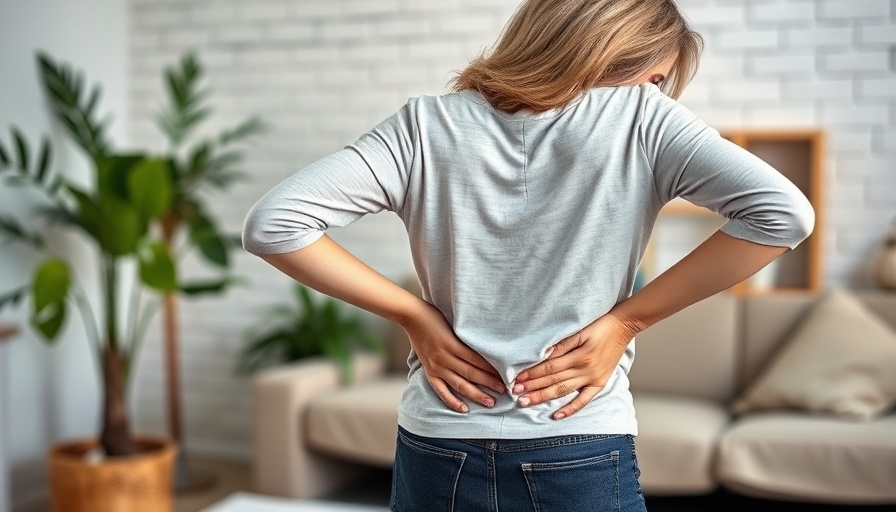
Unpacking the Connection: Stomach and Back Pain in Women Over 40
As women navigate the transition into their 40s and beyond, many start to see a frustrating duo emerge: stomach discomfort paired with persistent back pain. This can take the form of dull aches, sharp cramps, or bloating accompanied by lower back tension. Understanding this overlapping experience is essential for taking charge of one’s health. Fortunately, the factors contributing to these discomforts are mostly manageable and linked to lifestyle choices.
Common Causes of Stomach and Back Pain Together
Many women find themselves grappling with this uncomfortable symptom pair due to several common causes. Key triggers include:
- Hormonal Changes: The hormonal fluctuations during perimenopause and menopause can lead to a variety of discomforts. These hormonal shifts may result in bloating, water retention, and cramps that radiate into the lower back, creating a cycle of discomfort.
- Digestive Issues: Another significant factor for women over 40 is a slowing metabolism, leading to digestive problems such as irritable bowel syndrome (IBS), constipation, or acid reflux. These conditions can create abdominal distress that directly translates to back pain.
- Poor Posture and Sedentary Lifestyle: Increased time spent sitting—whether at work or during long drives—can compress abdominal organs while straining the lumbar spine, often exacerbating both back pain and stomach discomfort.
- Stress and the Gut-Brain Connection: Stress is notorious for its impact on both mental and physical health. When stress levels rise, cortisol can disrupt digestion, leading to gastrointestinal issues, and also cause muscle tension, which manifests as back pain.
Cracking the Code: How Posture Influences Pain
Your sitting posture is crucial in determining how your body feels every day. Slouching or leaning forward compresses abdominal organs, affecting proper digestion and straining your back muscles. Over years, this leads to chronic bloating, abdominal pain, and a vicious cycle of back strain.
To combat this, consider ergonomic adjustments, like using a memory foam seat cushion and lumbar support. These tools can:
- Reduce pressure on the lower back
- Improve spinal alignment
- Allow abdominal organs to rest comfortably
These small changes could lead to remarkable relief for those experiencing simultaneous stomach and back discomfort.
When It’s Time to Consult Your Doctor
While common causes often drive stomach and back pain together, it’s critical to recognize when these symptoms warrant a visit to your healthcare provider. Seek immediate help if you experience:
- Severe or sudden abdominal or back pain
- Symptoms like fever, nausea, or vomiting
- Unexplained weight loss or blood in stools
- Painful urination or any strange symptoms
These red flags indicate a potential underlying health concern that requires professional evaluation.
Finding Daily Relief: Practical Tips for Women
Taking proactive steps to alleviate stomach and back pain can be empowering. Here are a few practical strategies that women can implement at home:
- Staying Active: Regular gentle exercise such as yoga, walking, or swimming helps keep muscles flexible and aids digestion.
- Mindfulness Practices: Techniques such as deep breathing, yoga, or meditation can alleviate stress, which may help control the physical symptoms experienced.
- Nutrition Adjustments: Incorporating a balanced diet rich in fiber can ease digestive issues, while hydration is essential for overall health.
By recognizing their own body’s signals and employing these strategies, women can foster a more comfortable daily experience.
Take Charge of Your Health Today
Suffering from simultaneous stomach and back pain doesn't have to be your reality. With knowledge of the causes, awareness of warning signs, and practical steps for relief, you can actively work towards improving your health. Start by evaluating your daily habits and making necessary adjustments—your body will thank you.
 Add Row
Add Row  Add
Add 




Write A Comment